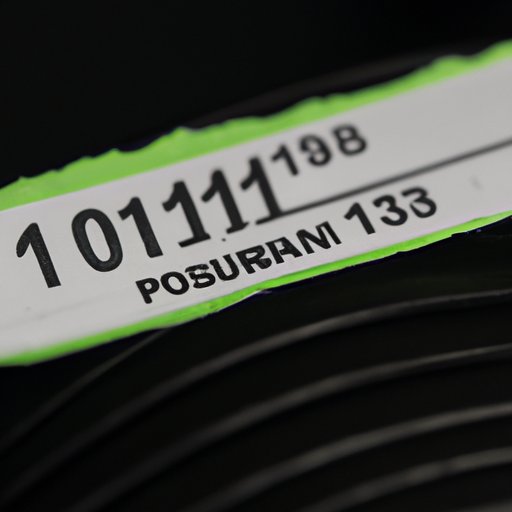Introduction
Have you ever heard someone speak about their personal record, or PR, in the gym before? PRs, or personal records, refer to the highest weight or rep count achieved in a specific exercise. PRs are essential for fitness enthusiasts, weightlifters, and athletes alike to track their progress and achieve their fitness goals.
In this article, we will delve into PRs in the gym, breaking down their significance, how to improve them, and the science behind them.
Explaining the Benefits of PRs in Gym
In the simplest terms, PRs are measurements of progress that help you monitor your fitness development. Tracking them over time allows you to identify areas of improvement and weaknesses that need addressing.
PRs are essential for the following reasons:
- They provide a sense of accomplishment that motivates you to keep pushing towards your goals.
- They help you understand what your body is capable of achieving and where you should improve.
- They allow you to measure progress and adjust your training program accordingly.
Examples of how PRs can help achieve fitness goals include lifting heavier weight, increasing reps, performing more sets, and decreasing rest time between sets.
How to Improve Your PR in Gym
Improving your PR requires a combination of several factors, including training frequency, volume, form, progressive overload, and recovery and rest.
Training frequency and volume: To improve your PR, you must train regularly and with sufficient volume. This means progressively increasing the number of sets, reps, or weight to challenge your muscles and promote growth and strength development.
Importance of proper form: While you may be tempted to add more weight to the bar quickly, proper form is critical to achieving a new PR safely. Poor form can lead to injury, and potential setbacks to your progress. Always prioritize proper form and technique over lifting heavier weights.
Incorporating progressive overload: To keep improving your PR, you need to gradually increase the stress on your muscles. This technique is known as progressive overload, which includes adding weight, performing more reps, or reducing rest time between sets. This keeps your body adapting and improving.
Recovery and rest: Lastly, recovery and rest are essential components of improving your PR and gaining muscle. Adequate rest allows your muscles to recover and rebuild after intense training sessions to preserve muscle mass and reduce the risk of injury.
The Science of PRs
Physiological mechanisms behind PRs are fascinating and involve optimizing muscular strength, power, and hypertrophy. When you strive to achieve a new PR, your body adapts to the training stress and responds by increasing muscle fiber size, number, and strength. With consistent training and progressive overload, you can continually break through these thresholds and set new PRs.
Behind the Numbers
Measuring PRs can take different approaches, depending on your fitness goals. Many people track PRs using apps, journals, or online spreadsheets to keep a visual record of their progress. Some common ways to measure PRs include:
- One-rep max: This measures the maximum weight you can lift in a single rep for a specific exercise
- Rep max test: This measures the maximum number of reps you can perform using 70-80% of your one-rep max
Setting new PR targets can be a daunting task, especially for beginners. However, having realistic PR targets will help you stay motivated and make it easier to see your progress over time. Breaking down larger goals into smaller achievable milestones can help you stay committed.
The Significance of Setting PR Targets
Setting realistic goals is one of the most effective strategies for staying motivated, and creating PR targets are no exception. They provide a clear roadmap for achieving your fitness goals and allow you to celebrate your accomplishments.
To create, and achieve PR targets:
- Take note of your current PRs for specific exercises and set achievable targets.
- Create a detailed workout program with progressive overload, sufficient recovery, and rest time.
- Chart your progress visually using a journal, app or spreadsheet.
- Celebrate your achievements and set new targets to continue improving your fitness development.
When creating goals, it’s best to keep in mind that everyone’s fitness level and goals vary, so tailor your goals to your specific needs.
Mastering Your Mindset for PRs
Breaking PRs in the gym is not just a physical accomplishment, but a mental one as well. Maintaining a positive mental state is crucial to overcoming plateaus or setbacks in your fitness journey.
To help improve your mindset and excel at PRs, try techniques such as:
- Meditation or deep breathing exercises
- Visualization
- Positive self-talk and encouragement
- Celebrate small achievements towards big goals
- Consistency and discipline in your training program
Handling setbacks and plateaus are also essential elements of mastering your mindset. When you reach a plateau, it’s essential to evaluate your training program and adjust it accordingly. Remember to remain patient and consistent, as progress takes time.
Conclusion
Improving your PRs in the gym are essential components of achieving fitness goals. By tracking your PR progress, incorporating progressive overload, and mastering your mindset, you can take your training to the next level and achieve your desired fitness goals. Remember to listen to your body and adjust your training program accordingly to promote continued progress.
Maintaining a positive attitude and consistency, along with monitoring your PRs, will help you on your journey to continued success in the gym.
